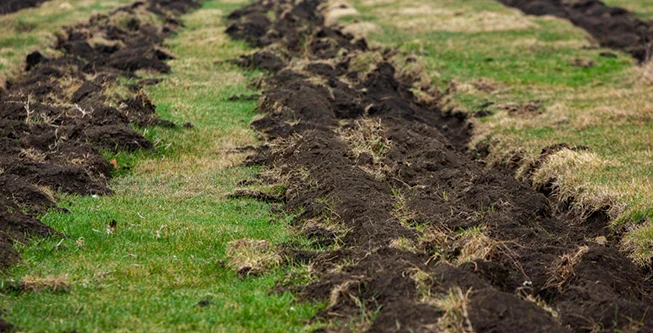Good Agricultural Practices
We feed the earth,
the earth feeds us!





Soil conservation treatments
They retain moisture in the soil, help biological activity in the so-called living soil. In this way, carbon is retained in the soil and used as food for the next crop. In these treatments, the amount of chemical phosphorus and chemical nitrogen is greatly reduced, due to the improved biological activity of the soil, which becomes food for the plants.
- Using bacteria and fungi to improve microbiological activity – to break down plant residues.
The good biological activity of the soil contributes to good plant immunity, and as a result – reduced use of mineral fertilizers and pesticides and improvement of soil fertility. - No-till farming involves planting seeds in the residues of the previous crop, without tilling the soil between harvests. No till leaves 60 to 70 percent of the field covered with crop residues.
- Strip-Till – in this tillage, the soil remains untilled from the harvest of the previous crop until the next crop is planted, except for strips 1/3 the width of the row.
- Ridge-till – in this tillage, the soil remains uncultivated from the harvest of the previous crop until the sowing of the next crop except for strips 1/3 the width of the row. Sowing is done at the top of the bed and usually involves removing the top of the bed. Plant residues remain on the surface between the beds. Weed control is carried out by means of chemical means, sometimes combined with mechanical treatment, during which the beds are restored.
- Mulch-till is the management of the amount, orientation and distribution of residues (plant-stem mass) of crops and other types of plants on the soil surface throughout the year while the plants are growing. It is specific to the system that, while in no-till and strip-till treatments, where a small part of the field surface is treated (up to 30%), in mulch-till a combined treatment of the surface is applied.
- Opti-till or Minimum-till – minimal, partial, combined soil treatments, one, two or three depending on the type of soil and the specific climatic conditions. It is a technology in which deep tillage is replaced by the construction of a biological eco-system of the soil. In it, microorganisms, roots and other soil fauna take over the functions of processing and balancing nutrients.
